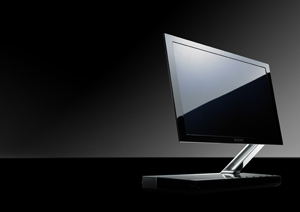OLED a real display revolution
Dealing with digital information is getting easier than ever, and cheaper than ever, to boot. If this sounds too good to be true, it’s not.
The new technology is called OLED, short for Organic Light Emitting Diode. And it spells revolution.
The word revolutionary is thrown around fairly often in the technology field, but is rarely warranted. We’re still waiting to see those two–wheeled Segways crowding the streets of busy urban centres, after all. But OLED technology will be worthy of the ‘revolutionary’ moniker.
To understand and appreciate how big a deal this is, and what OLED brings to the table, let’s talk about how we’ve been seeing digital information up to this point.
In the early days, we had CRT monitors. A CRT, or Cathode Ray Tube, monitor creates images by sweeping an electron beam along the inside of a glass screen coated with a special blend of phosphor. These began as single color, or monochromatic, screens with green or white letters on a black background. While just fine for text, they couldn’t display proper images and were either very small, or very bulky. Early attempts at portable computers had tiny 5–9 inch screens, and were ill–suited for anything more than simple text entry. You weren’t going to read your morning papers on these. Far better color CRT monitors followed, but still retained their bulkiness. Newer CRTs are fairly free from this problem, but again, they are heavy and not terribly portable. You wouldn’t want a 50 pound, 17 inch monitor on your lap for very long.
LCD, or Liquid Crystal Display, technology was introduced to computer use in the early 1990s with laptops such as the first ThinkPads from Lenovo
(formerly known as IBM). LCD technology uses the properties of the liquid crystal. When a small current is applied, liquid crystal elements can go from being clear to black. Digital wrist watches and calculators work this way. An LCD display takes that idea further, buy adding a back light to shine through the glass containing the liquid crystal. The liquid crystal elements themselves are very small, with each one representing a pixel, or dot, on the screen. Each pixel has a Red, Green, and Blue ‘window’ that the liquid crystals can ‘open’ or ‘close’ by switching between clear and black. Working together, they can create millions of different colors and sharp–looking images on a very thin display. It’s this thinness that makes them popular in laptops and small handheld computers and music players. But they are fragile, they require backlighting to be seen well, and are still too power hungry for portable battery powered use.
Other display technologies such as Plasma and DLP focus more towards television applications. Great technologies, but still, they don’t have what OLED has to offer.
OLED technology will take us into a Jetsons–style future. OLED technology is similar to normal LEDs only in that they make their own light and consume very low power. What makes them really cool is how they work, and what they can do. OLED displays are essentially printed onto a polymer sheet using technology similar to how you would print out a picture on your inkjet printer.
It’s a bit more complicated than that in real life, but the beauty is that the organic compounds remain flexible on the polymer that the OLEDs were printed onto. Now you have a display that can emit its own light. It can be rolled up like a newspaper, or sewn onto clothing. We can also have a foldable, flexible newspaper that updates itself every morning, eliminating the need for wasteful paper. We can have books with turning pages that can display a new novel as soon as you are done reading the last one. Imagine T–shirts that can change their pictures wirelessly!
Some music players have already been experimenting with early OLED displays, but their use is still very similar to rigid LED screens.
Viewing an OLED display is also more enjoyable for others. Since an OLED display emits its own light, the display can also be viewed up to 90 degrees off to the side and still be perfectly legible. This makes them also good for use in large, high–definition TVs. And since they require very little power, the batteries can be either discreet or very long–lasting, depending on their size. Colors are truer and richer because they don’t require other light sources to generate them. They are also exponentially easier to produce, with fewer failure issues than LCD displays. Not only can they be ‘printed’ to polymers using inkjet technology, but they can even be silk–screened onto fabric.
“So then, what’s the hold up?’ some might ask. Well, one of the biggest roadblocks to getting OLED technology into our eager hands is that – like most organic compounds – they tend to degrade fairly quickly. Various sealing technologies help prevent exposure to air and water, but in a flexible application, these seals are hard to maintain. Some colors, especially blue, are very prone to dying young. Developers have been testing newer compounds. These can make a blue OLED unit go from having just a 6,000–hour lifespan to about 20,000 hours. But an average LCD display is often good for 60,000 hours of use, so even 20,000 hours is below what consumers expect. Recent advances, though, have pushed that lifetime to 80,000–100,000 hours. Once these advances make it to the production plants, OLEDs will step onto the stage as a mature and useful technology.
OLED display technology will start making a larger appearance in 2008, but Sony has introduced an OLED TV already in Japan. Be ready to see a real revolution in low–cost–high–quality displays. And look forward to just plain cool applications that were never possible before.

